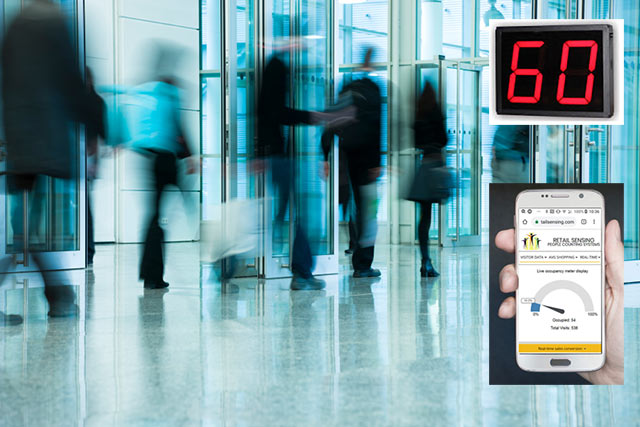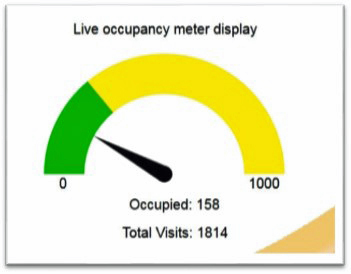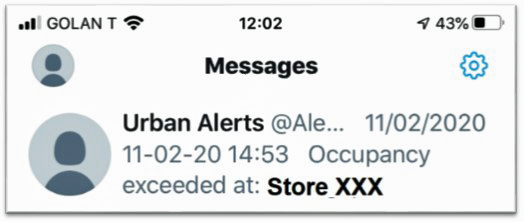Coronavirus concerns cause building capacity cuts: how to monitor and display occupancy
In these days of the pandemic, many places have imposed a limit on the number of occupants. Lots of these businesses are using people counting systems to help them comply with capacity constraints.
The systems count all incoming and outgoing people, and calculate the current occupancy. The information is displayed in a number of ways, and alerts sent when getting near to, or exceeding, capacity.

How a Video Occupancy Counter Works
Computer vision acts as an occupancy sensor. Cameras positioned over all entrances connect to people counting devices. These devices analyse the images, detect people and record counts in and out. The occupancy data can be stored in the cloud and made available over the Internet-of-Things to authorised applications. Alternatively, communications like Ethernet, WiFi or RS422 are used.
The occupancy numbers are logged to provide a record of compliance with capacity restrictions. In better times they also provide valuable marketing information - showing how many people entered and left every hour or every day, for example, over the past weeks or months.
Displaying Occupancy
A virtual occupancy meter shows the current occupancy via smartphone or computer

An LED display on the premises shows the number of occupants and flashes an alert when nearing the maximum
Systems can also send texts when occupancy approaches or passes its threshold.

Text alert shows occupancy has exceed capacity
